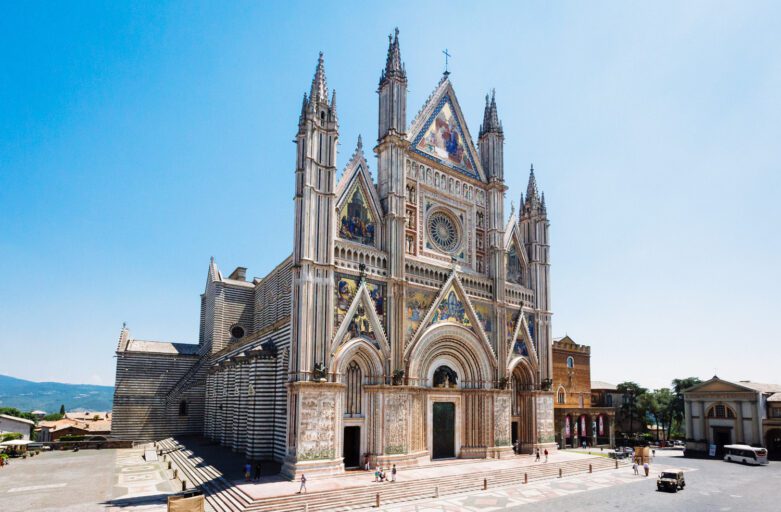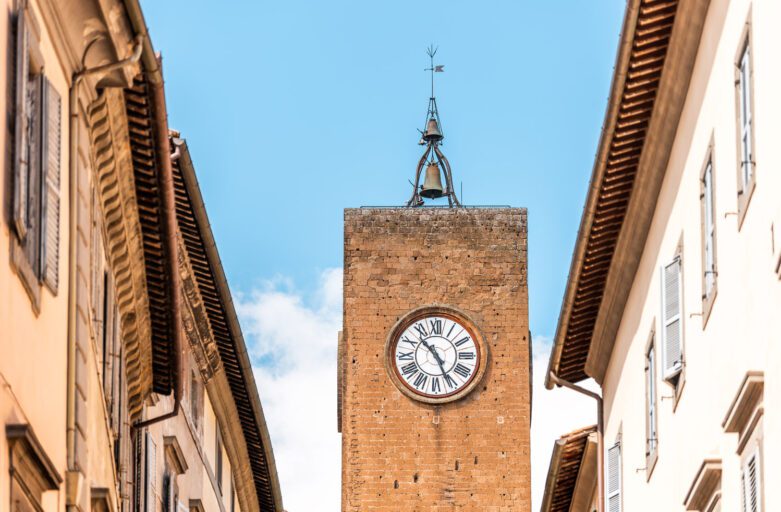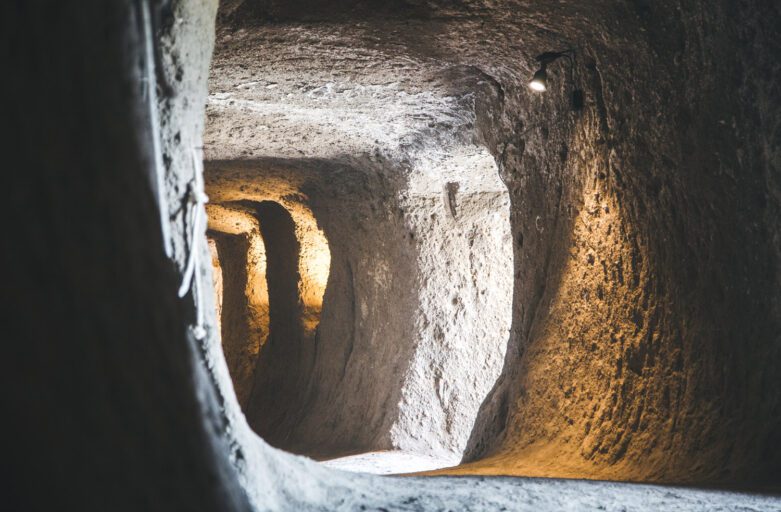Antonio da Sangallo, a Brilliant Engineer
On the edge of the Orvieto Cliff there is a small square in which only a cylindrical building exists, apparently quite anonymous. This structure, however, hides a “thing ingenious with fancy and wonderful with beauty” inside. This is how Giorgio Vasari (in the 1550 edition of his Lives of the Most Excellent Painters, Sculptors, and Architects) ends the description of this fascinating work of architecture and engineering: a well dug deep into the tuff.
The story of the well is linked with the Pope and Rome, and Florence, and Emperor Charles V Habsburg and his landsknechts. In May 1527, Rome was besieged all around by a blood and gold-thirsty Spanish/German army, ending with a raid that ravaged both the inhabitants and the city. Pope Clement VII (1478 - 1534) succeeded in taking shelter in Castel Sant'Angelo (Castle of the Holy Angel), where he helplessly witnessed the destruction of Rome. This tragic event, known as the Sack of Roma, lasted for whole months.
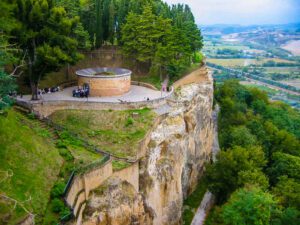
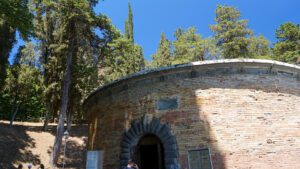
On a winter night of 1527 (between December 5 and 6), the Pontiff fled and took shelter in Umbria, precisely Orvieto. Once there, he officially launched the building site of the well, entrusting an architect from Florence, Antonio Cordini a.k.a. Antonio da Sangallo il Giovane (1484 - 1546), with the project. He was called il Giovane, “the Younger,” to distinguish him from his uncle Antonio da Sangallo il Vecchio, “the Elder,” another famous architect.
Sangallo the Younger had already been in Orvieto some years before, namely in 1525, sent there by the Pope with the task of studying the possibility of carrying water into the town, so as to avoid lacks of supply caused by either sieges or damages at the Medieval aqueduct of Alfina. Why did the Pope worry so much about water? Because the first move any army would do, when besieging a town, was to interrupt the water supplies. Therefore Clement VII decided to have the well built in order to make the town self-sufficient, capable of withstanding in case it were to undergo the same fate as Rome.
The enterprise was commemorated in a medal made by a great Florentine sculptor, Benvenuto Cellini (the author of Perseus with the Head of Medusa), and, by decision of Clement VII, coined with the inscription Ut bibat populus, “In order that the people may drink.”
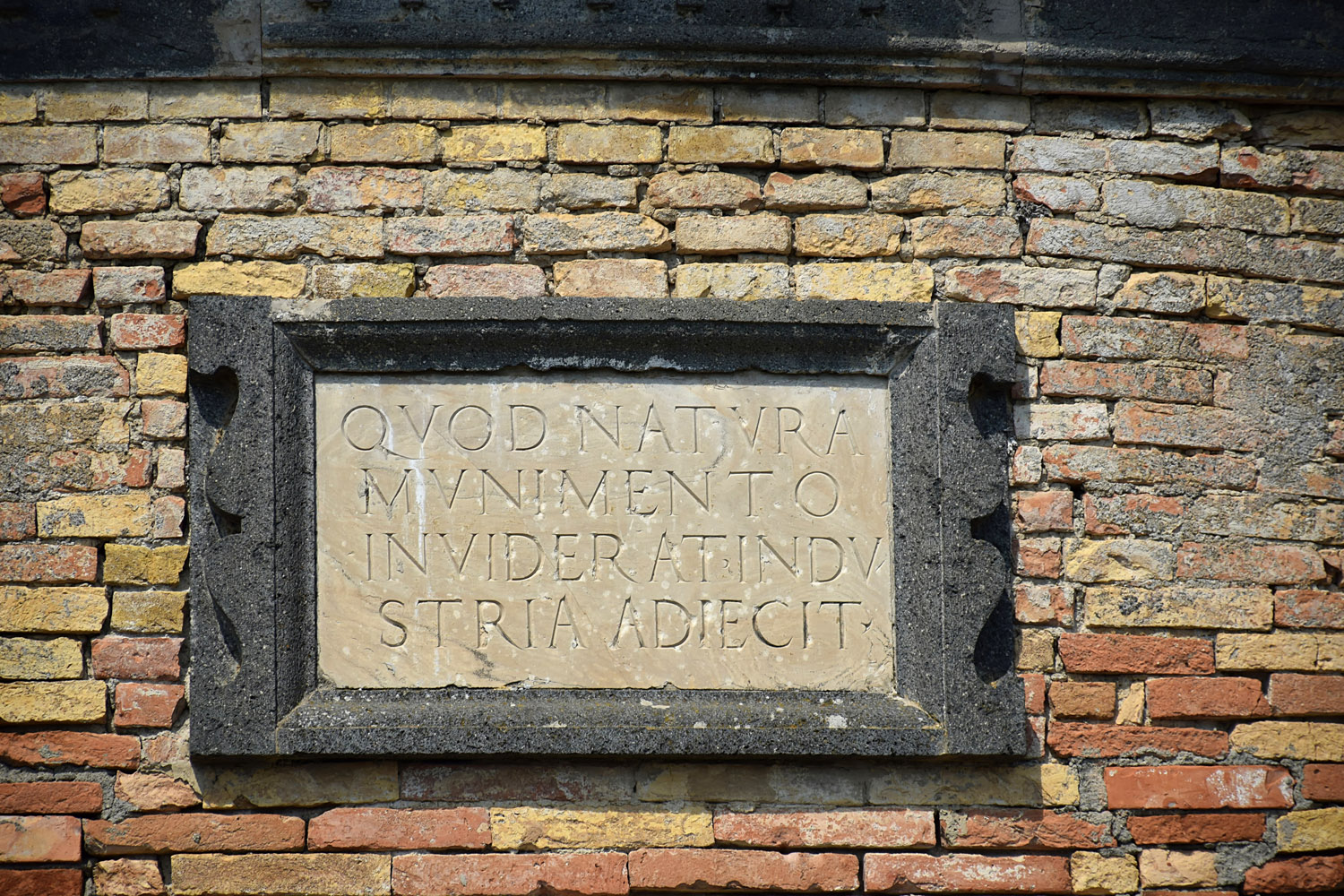
The Structure of the Well of Saint Patrick
The round external structure, low and broad, is the entrance of the well, that reaches deep into the earth up to a water source. On the wall, covered with small bricks, a Latin inscription reads: Quod natura munimento inviderat industria adiecit, “The supply that Nature did not mean to give was provided by engineering.” After the entrance you will meet a flight of wide, very low steps leading to the bottom, where a small bridge (originally made in wood and iron) was used to draw the water. Since animals, especially mules, transported the water containers, the steps could not be high and narrow, but had to be comfortable. When the urns had been filled, they went up again by using another staircase up to the exit, that is diametrically opposed to the entrance. In fact, Sangallo designed two helicoidal flights that prevented the carriers going down and up from hindering each other. Again Vasari: “You go up by a staircase different from going down, since two are the staircases, built spirally around the well void, by means of which those who go up and those who go down can move forward without meeting.”
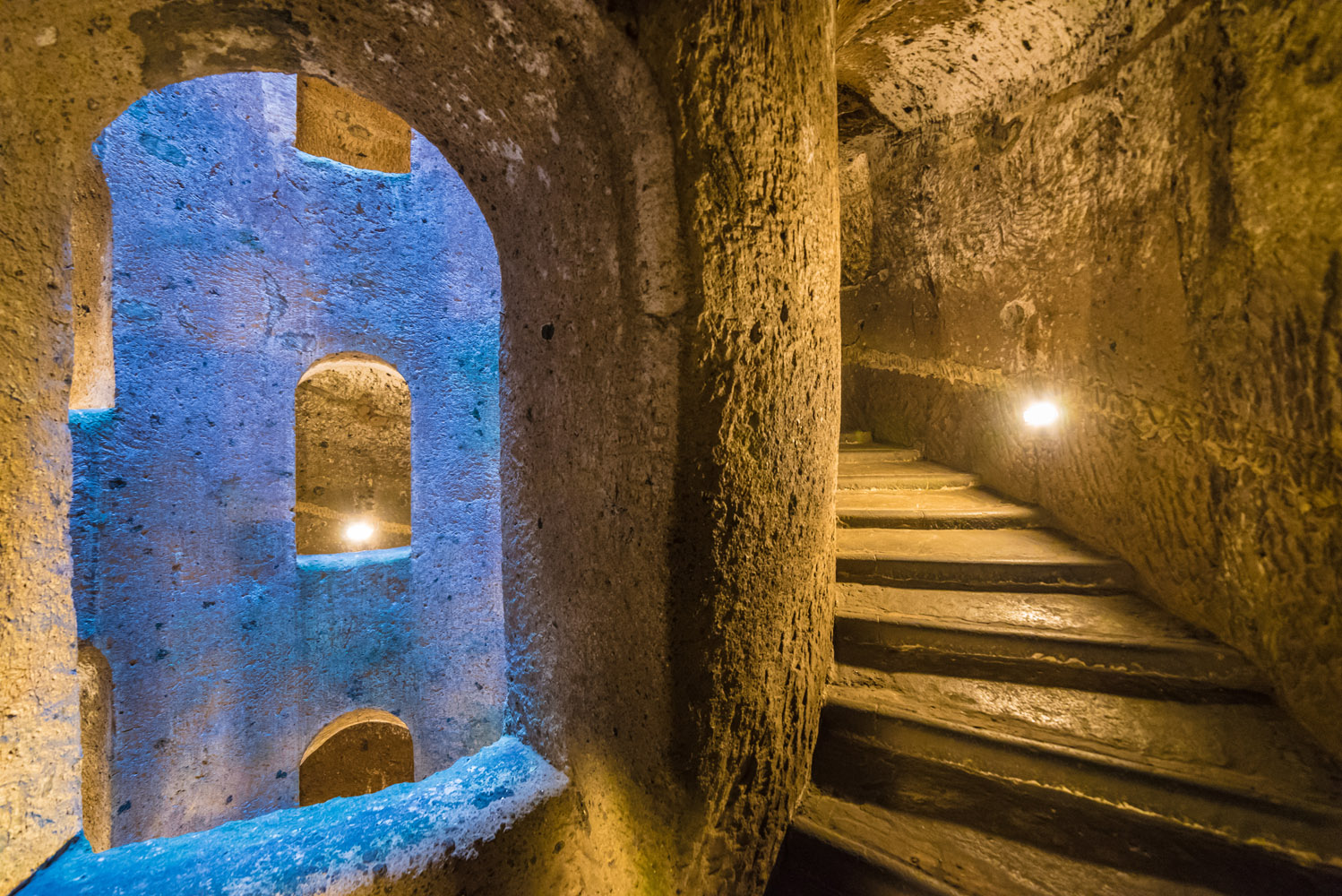
Antonio da Sangallo did design a really brilliant work of architecture, where functionality and aesthetics are inextricably connected, and the one cannot exist without the other. A functioning work, because the project perfectly matched its practical purpose, that is, that the town may never get short of water. And aesthetically beautiful, because – even if the building elements are as essential as needed – it can still fascinate us as it did with many who visited this place, made in earth and light. Thanks in fact to the great central hole and the openings along the path, this very scenic space was naturally illumined – though less and less as you drew near to the bridge.
Some figures: the well is 62 meters (180 feet) deep, 13 meters (40 feet) wide. The staircases are lined with 72 windows. Two are the spiral-shaped flights, with 248 steps. Ten years were needed to complete the work. The “Pope's Well,” or “Well of the Citadel,” was ended in 1537, when a new Pope had already been elected, some years before: Paul III, of the powerful Farnese family – while Clement VII was a Medici from Florence.
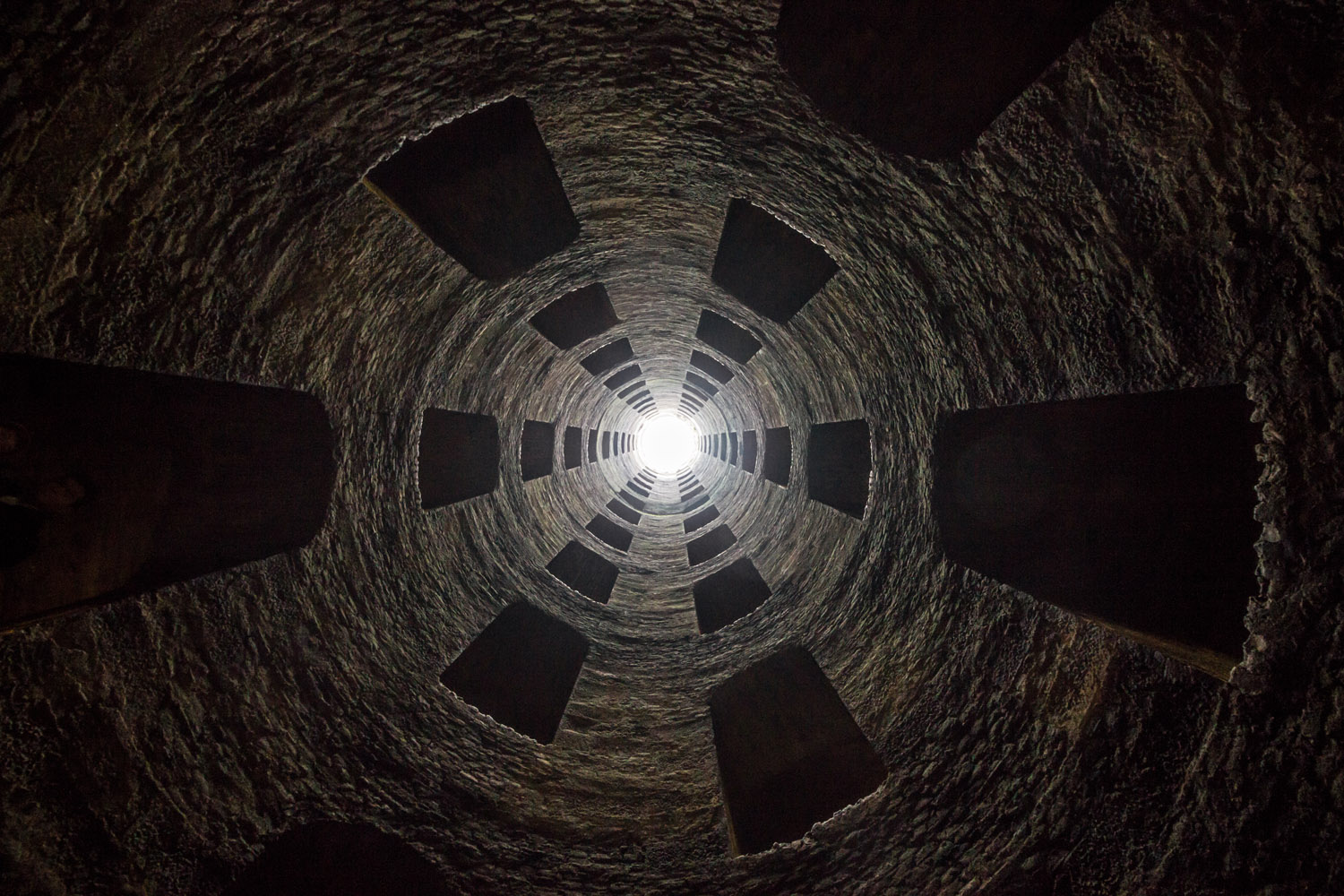
The Legend about the Well of Saint Patrick
The Well in the Orvieto Citadel was renamed after Saint Patrick in the second half of the 18th century – two hundred years after its making – by the friars of the Order of the Servants of Mary. It all began with an analogy with a mystic Medieval place, “Saint Patrick's Purgatory.”As the legend goes, there was inIreland, on an island in Lough (Lake) Derg, a well that Christ himself had shown Patrick(370 ca - 461), the famous, saintly Irish bishop; the well cold be found near the place where he used to go and pray. Here many pilgrims would then come, and say they had visions of hell and purgatory. The story was recounted by a Cistercian monk, about 1170, in his Tractatus de Purgatorio Sancti Patricii, that had been translated and was widespread. In a shorter form, one century later, the story was included in a very well known Medieval text,The Golden Legend by Jacopo da Vararezze.
The Golden Legend (from Latin legenda, i.e. “things worth reading”) is a collection of lives of saints that became a major source of inspiration for many painters. So, the picture of Saint Patrick who indicates a well as the entrance to afterlife was often reproduced in both manuscripts and frescoes. For example, not very far from Orvieto, you may visit the Convent of Saint Francis in Todi.
Like in the Irish grotto, in the Orvieto well also you will be going toward darkness, more and more downward – where however you will find water, the purifying element, then go back up toward light by using the other flight of steps. A mystic function has therefore been added to the practical, thus suggesting an initiatory path, a metaphor of life: the well lets you walk ever forward, never having to change direction.
INFORMAZIONI
Località
Piazza Cahen, 5B, 05018 Orvieto TR
Orari
Giugno-Agosto: tutti i giorni 9:00-20:00
1-22 Settembre: tutti i giorni 9:00-19:00
5-11 Ottobre: tutti i giorni 9:00-19:00
12-19 Ottobre chiuso per lavori di manutenzione.
Dal 20 ottobre: tutti i giorni dalle 9:00-19:00
La biglietteria chiude 45 minuti prima dell’orario di chiusura.
Contatti
Email: info@genesiagency.it
